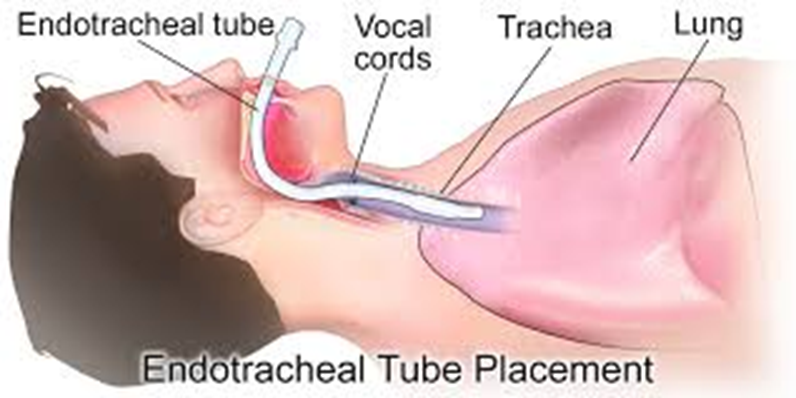A nurse is preparing to remove an NG tube from a client. Which of the following actions should the nurse take first?
Verify the provider’s prescription to discontinue the tube.
Disconnect the tube from the wall suction.
Perform hand hygiene.
Provide mouth care to the client.
The Correct Answer is A
Choice A reason:
The first step in removing an NG tube is to verify the provider’s prescription to discontinue the tube. This ensures that the removal is authorized and appropriate for the client’s current condition.
Choice B reason:
Disconnecting the tube from the wall suction is an important step, but it should be done after verifying the provider’s prescription. This step prevents any suction-related complications during the removal process.
Choice C reason:
Performing hand hygiene is crucial to prevent infection, but it is not the first step. Hand hygiene should be performed after verifying the provider’s prescription and before touching the client or any equipment.
Choice D reason:
Providing mouth care to the client is important for comfort and hygiene, but it is not the first step in the process of removing an NG tube. This can be done after the tube has been safely removed.
Nursing Test Bank
Naxlex Comprehensive Predictor Exams
Related Questions
Correct Answer is A
Explanation
Choice A reason: Office of Emergency Management (OEM)
The Office of Emergency Management (OEM) is typically the first agency to be notified in the event of a nonbiological or chemical incident. The OEM coordinates the local response efforts and ensures that all necessary resources and personnel are mobilized. They work closely with other local, state, and federal agencies to manage the incident effectively. The OEM’s role includes assessing the situation, providing information to the public, and coordinating evacuation or shelter-in-place orders if necessary.
Choice B reason: Federal Emergency Management Agency (FEMA)
The Federal Emergency Management Agency (FEMA) plays a crucial role in disaster response and recovery at the federal level. However, they are usually involved after the initial local response has been established. FEMA provides support and resources to local and state agencies, but the immediate notification should go to the local Office of Emergency Management.
Choice C reason: American Red Cross (ARC)
The American Red Cross (ARC) is a vital organization in disaster response, providing emergency shelter, food, and medical care. While they are an essential part of the response team, they are not typically the first agency to be notified. The ARC works in coordination with local emergency management agencies to support the affected community.
Choice D reason: U.S. Department of Homeland Security (DHS)
The U.S. Department of Homeland Security (DHS) oversees national efforts to protect against and respond to various threats, including chemical incidents. However, like FEMA, DHS is generally involved at a higher level of coordination and support. The immediate response is managed by local agencies, with DHS providing additional resources and expertise as needed
Correct Answer is B
Explanation
Choice A reason:
Turn the client every 4 hours: Regularly turning the client can help prevent pressure ulcers and improve overall circulation, but it is not the most effective measure specifically for preventing ventilator-associated pneumonia (VAP). While repositioning can help with lung expansion and secretion clearance, oral care is more directly related to reducing VAP risk.
Choice B reason:
Brush the client’s teeth with a suction toothbrush every 12 hours: Oral care is crucial in preventing VAP. Bacteria from the mouth can easily travel to the lungs, especially in intubated patients. Using a suction toothbrush helps remove dental plaque and secretions, reducing the bacterial load and the risk of infection. This practice is a key component of VAP prevention bundles.

Choice C reason:
Provide humidity by maintaining moisture within the ventilator tubing: While maintaining humidity is important to prevent drying of the respiratory mucosa and to help with secretion clearance, it does not directly reduce the risk of VAP. Proper humidification is necessary for patient comfort and respiratory function but is not a primary VAP prevention strategy.
Choice D reason:
Position the head of the client’s bed in the flat position: Positioning the head of the bed flat can increase the risk of aspiration, which is a significant risk factor for VAP. The head of the bed should be elevated to 30-45 degrees to reduce the risk of aspiration and promote better lung expansion.
Whether you are a student looking to ace your exams or a practicing nurse seeking to enhance your expertise , our nursing education contents will empower you with the confidence and competence to make a difference in the lives of patients and become a respected leader in the healthcare field.
Visit Naxlex, invest in your future and unlock endless possibilities with our unparalleled nursing education contents today
Report Wrong Answer on the Current Question
Do you disagree with the answer? If yes, what is your expected answer? Explain.
Kindly be descriptive with the issue you are facing.
